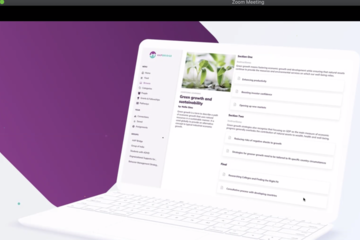We found 306 results that contain "text"
Posted on: #iteachmsu


Placeholder text
Lorem Ipsum, sometimes referred to as 'lipsum', is the placeholder text used in design when creating content. It helps designers plan out where the content will sit, without needing to wait for the content to be written and approved. It originally comes from a Latin text, but to today's reader, it's seen as gibberish
Posted on: #iteachmsu

text-space
A control for entering a date (year, month, and day, with no time). Opens a date picker or numeric wheels for year, month, day when active in supporting browsers.
A control for entering a date (year, month, and day, with no time). Opens a date picker or numeric wheels for year, month, day when active in supporting browsers
A control for specifying a color; opening a color picker when active in supporting browsers.
A check box allowing single values to be selected/deselected.
A control for entering a date (year, month, and day, with no time). Opens a date picker or numeric wheels for year, month, day when active in supporting browsers
A control for specifying a color; opening a color picker when active in supporting browsers.
A check box allowing single values to be selected/deselected.
Posted on: #iteachmsu


How does generative AI work? -- 935
Generative AI starts with a prompt that could be in the form of a text, an image, a video, a design, musical notes, or any input that the AI system can process. Various AI algorithms then return new content in response to the prompt. Content can include essays, solutions to problems, or realistic fakes created from pictures or audio of a person.
Early versions of generative AI required submitting data via an API or an otherwise complicated process. Developers had to familiarize themselves with special tools and write applications using languages such as Python.
Now, pioneers in generative AI are developing better user experiences that let you describe a request in plain language. After an initial response, you can also customize the results with feedback about the style, tone and other elements you want the generated content to reflect.
Early versions of generative AI required submitting data via an API or an otherwise complicated process. Developers had to familiarize themselves with special tools and write applications using languages such as Python.
Now, pioneers in generative AI are developing better user experiences that let you describe a request in plain language. After an initial response, you can also customize the results with feedback about the style, tone and other elements you want the generated content to reflect.
NAVIGATING CONTEXT
Posted on: #iteachmsu


Digital Collaborative Learning for the 21st Century 2.0 (Learning Community for AY2023-2024)
Chapter 4. Community: The Hidden Context for Learning
Deborah J. Bickford and David J. Wright
University of Dayton
This chapter focuses on a powerful context for learning: community. Community catalyzes deep learning and should be a critical consideration when planning physical and virtual learning spaces.
Deborah J. Bickford and David J. Wright
University of Dayton
This chapter focuses on a powerful context for learning: community. Community catalyzes deep learning and should be a critical consideration when planning physical and virtual learning spaces.
NAVIGATING CONTEXT
Posted on: #iteachmsu


Communication to Support Student Learning in a Digital Learning Environment
What is communication (and what isn’t it)?
The P21 framework emphasizes effective use of oral, written, and nonverbal communication skills for multiple purposes (e.g., to inform, instruct, motivate, persuade, and share ideas). It also focuses on effective listening, using technology to communicate, and being able to evaluate the effectiveness of communication efforts—all within diverse contexts (adapted from P21). Note that working in partners is a great way to collaborate or build shared understanding but a critical part of communication is sharing with an authentic audience.
The P21 framework emphasizes effective use of oral, written, and nonverbal communication skills for multiple purposes (e.g., to inform, instruct, motivate, persuade, and share ideas). It also focuses on effective listening, using technology to communicate, and being able to evaluate the effectiveness of communication efforts—all within diverse contexts (adapted from P21). Note that working in partners is a great way to collaborate or build shared understanding but a critical part of communication is sharing with an authentic audience.
ASSESSING LEARNING
Posted on: #iteachmsu

Predominantly inattentive type. The student may: o submit inaccurate or incomplete work, o have diff
Primer text from The College of William & Mary
ADHD is one of the most commonly diagnosed conditions of children (Centers for Disease
Control and Prevention, 2015).
In a 2016 Centers for Disease Control and Prevention study, scientists found that 6.1 million children aged 2-17 years living in the U.S. had been diagnosed with attention-deficit/hyperactivity disorder (ADHD), which is similar to the previous en
Ages 6-11: Approximately 2.4 million children
Ages 12-17: Approximately 3.3 million children
The diagnostic term attention-deficit/hyperactivity disorder (ADHD) refers to individuals who display patterns of inattention, impulsivity, and overactive behavior that interfere with daily functioning (American Psychiatric Association [APA], 2013).
ADHD is one of the most commonly diagnosed conditions of children (Centers for Disease
Control and Prevention, 2015).
In a 2016 Centers for Disease Control and Prevention study, scientists found that 6.1 million children aged 2-17 years living in the U.S. had been diagnosed with attention-deficit/hyperactivity disorder (ADHD), which is similar to the previous en
Ages 6-11: Approximately 2.4 million children
Ages 12-17: Approximately 3.3 million children
The diagnostic term attention-deficit/hyperactivity disorder (ADHD) refers to individuals who display patterns of inattention, impulsivity, and overactive behavior that interfere with daily functioning (American Psychiatric Association [APA], 2013).
Posted on: #iteachmsu


The diagnostic term attention deficit
Classroom Interventions for Attention Deficit/ Hyperactivity Disorder Considerations Packet
Primer text from The College of William & Mary
ADHD is one of the most commonly diagnosed conditions of children (Centers for Disease
Control and Prevention, 2015).
In a 2016 Centers for Disease Control and Prevention study, scientists found that 6.1 million children aged 2-17 years living in the U.S. had been diagnosed with attention-deficit/hyperactivity disorder (ADHD), which is similar to previous en
Ages 6-11: Approximately 2.4 million children
Ages 12-17: Approximately 3.3 million children
The diagnostic term attention deficit/hyperactivity disorder (ADHD) refers to individuals who display patterns of inattention, impulsivity, and overactive behavior that interfere with daily functioning (American Psychiatric Association [APA], 2013).
The Diagnostic and Statistical Manual (DSM) V (APA, 2013) criteria for diagnosing ADHD list
three types of ADHD and the accompanying characteristics.
Primer text from The College of William & Mary
ADHD is one of the most commonly diagnosed conditions of children (Centers for Disease
Control and Prevention, 2015).
In a 2016 Centers for Disease Control and Prevention study, scientists found that 6.1 million children aged 2-17 years living in the U.S. had been diagnosed with attention-deficit/hyperactivity disorder (ADHD), which is similar to previous en
Ages 6-11: Approximately 2.4 million children
Ages 12-17: Approximately 3.3 million children
The diagnostic term attention deficit/hyperactivity disorder (ADHD) refers to individuals who display patterns of inattention, impulsivity, and overactive behavior that interfere with daily functioning (American Psychiatric Association [APA], 2013).
The Diagnostic and Statistical Manual (DSM) V (APA, 2013) criteria for diagnosing ADHD list
three types of ADHD and the accompanying characteristics.
Posted on: Group 2

1st playlist-- What is Attention Deficit Hyperactivity Disorder?
Primer text from The College of William & Mary
ADHD is one of the most commonly diagnosed conditions of children (Centers for Disease
Control and Prevention, 2015).
In a 2016 Centers for Disease Control and Prevention study, scientists found that 6.1 million children aged 2-17 years living in the U.S. had been diagnosed with attention-deficit/hyperactivity disorder (ADHD), which is similar to previous en
Ages 6-11: Approximately 2.4 million children
Ages 12-17: Approximately 3.3 million children
The diagnostic term attention deficit/hyperactivity disorder (ADHD) refers to individuals who display patterns of inattention, impulsivity, and overactive behavior that interfere with daily functioning (American Psychiatric Association [APA], 2013).
The Diagnostic and Statistical Manual (DSM) V (APA, 2013) criteria for diagnosing ADHD list
three types of ADHD and the accompanying characteristics.
Predominantly inattentive type.
The student may:
o submit inaccurate or incomplete work,
o have difficulty attending to conversations, activities, or tasks,
o be easily distracted,
o have difficulty following directions,
o frequently lose materials, and/or
o have difficulty organizing tasks and materials.
Predominantly hyperactive/impulsive type.
The student may:
o Appear to be in constant motion,
o frequently fidget or move in his or her seat,
o become restless during quiet activities,
o leave his or her seat when expected to remain seated,
o interrupt others and classroom activities,
o talk excessively, and/or
o fail to follow classroom procedures (e.g., blurt out answers without raising hand).
Combined type.
The student may exhibit symptoms that include behaviors from both categories above.
In order for a student to be diagnosed with ADHD, symptoms must appear before age 12 and be exhibited across at least two settings. They must also have adverse effects on academic performance, occupational success, or social-emotional development (APA, 2013).
To add to the complexity of the diagnosis, children with ADHD are likely to have co-existing emotional, behavioral, developmental, learning, or physical conditions (Wolraich & DuPaul, 2010).
ADHD is one of the most commonly diagnosed conditions of children (Centers for Disease
Control and Prevention, 2015).
In a 2016 Centers for Disease Control and Prevention study, scientists found that 6.1 million children aged 2-17 years living in the U.S. had been diagnosed with attention-deficit/hyperactivity disorder (ADHD), which is similar to previous en
Ages 6-11: Approximately 2.4 million children
Ages 12-17: Approximately 3.3 million children
The diagnostic term attention deficit/hyperactivity disorder (ADHD) refers to individuals who display patterns of inattention, impulsivity, and overactive behavior that interfere with daily functioning (American Psychiatric Association [APA], 2013).
The Diagnostic and Statistical Manual (DSM) V (APA, 2013) criteria for diagnosing ADHD list
three types of ADHD and the accompanying characteristics.
Predominantly inattentive type.
The student may:
o submit inaccurate or incomplete work,
o have difficulty attending to conversations, activities, or tasks,
o be easily distracted,
o have difficulty following directions,
o frequently lose materials, and/or
o have difficulty organizing tasks and materials.
Predominantly hyperactive/impulsive type.
The student may:
o Appear to be in constant motion,
o frequently fidget or move in his or her seat,
o become restless during quiet activities,
o leave his or her seat when expected to remain seated,
o interrupt others and classroom activities,
o talk excessively, and/or
o fail to follow classroom procedures (e.g., blurt out answers without raising hand).
Combined type.
The student may exhibit symptoms that include behaviors from both categories above.
In order for a student to be diagnosed with ADHD, symptoms must appear before age 12 and be exhibited across at least two settings. They must also have adverse effects on academic performance, occupational success, or social-emotional development (APA, 2013).
To add to the complexity of the diagnosis, children with ADHD are likely to have co-existing emotional, behavioral, developmental, learning, or physical conditions (Wolraich & DuPaul, 2010).
Posted on: #iteachmsu


Text from William & Mary and Texas A&M
The goal of behavior management strategies is to help students learn to manage their ownbehavior. The following strategies are most effective when used in conjunction with evidence based instructional strategies.
Prevention StrategiesHere are some preventive measures that support students in demonstrating positivebehavior.
Nonverbal Supports: Together with the student, develop inconspicuous,nonverbal messages such as eye contact, hand gestures, or other signals that teach
Prevention StrategiesHere are some preventive measures that support students in demonstrating positivebehavior.
Nonverbal Supports: Together with the student, develop inconspicuous,nonverbal messages such as eye contact, hand gestures, or other signals that teach
Authored by: viju
Disciplinary Content
Posted on: #iteachmsu


Contextual Targeting: In Contextual targeting and Placement Targeting Recommendation system
Contextual targeting is a very effective method for targeting customers. It permits advertisers to display relevant ads on the website’s content.
It is all based on the user search, they see the ads of what they have searched for in the past. Also, it ensures that the ad content matches the page content and contextually relevant advertisements can lead the user to the right place.
Thus, creating a win-win situation. This also complements the overall video experience. Here, the advertisements get selected automatically by a system based on the identity and personality of the user.
Placement targeting in simple terms means that an advertiser selects a specific website where he wants his/her ad to appear. For his ad campaign, he can select his targeted sites where the maximum no. of his/her target market resides. For example – If I am a shoe seller and I want to increase my market reach, then I will try to get ad space on a good shoe review website. This will increase the trust of the customers on my brand and product and will ultimately lead to sales.
It is all based on the user search, they see the ads of what they have searched for in the past. Also, it ensures that the ad content matches the page content and contextually relevant advertisements can lead the user to the right place.
Thus, creating a win-win situation. This also complements the overall video experience. Here, the advertisements get selected automatically by a system based on the identity and personality of the user.
Placement targeting in simple terms means that an advertiser selects a specific website where he wants his/her ad to appear. For his ad campaign, he can select his targeted sites where the maximum no. of his/her target market resides. For example – If I am a shoe seller and I want to increase my market reach, then I will try to get ad space on a good shoe review website. This will increase the trust of the customers on my brand and product and will ultimately lead to sales.
Authored by: Rupali
Posted on: #iteachmsu


How does generative AI work? -- 935
Generative AI starts with a prompt that could be in the form of a text, an image, a video, a design, musical notes, or any input that the AI system can process. Various AI algorithms then return new content in response to the prompt. Content can include essays, solutions to problems, or realistic fakes created from pictures or audio of a person.
Early versions of generative AI required submitting data via an API or an otherwise complicated process. Developers had to familiarize themselves with special tools and write applications using languages such as Python.
Now, pioneers in generative AI are developing better user experiences that let you describe a request in plain language. After an initial response, you can also customize the results with feedback about the style, tone and other elements you want the generated content to reflect.
Early versions of generative AI required submitting data via an API or an otherwise complicated process. Developers had to familiarize themselves with special tools and write applications using languages such as Python.
Now, pioneers in generative AI are developing better user experiences that let you describe a request in plain language. After an initial response, you can also customize the results with feedback about the style, tone and other elements you want the generated content to reflect.
Authored by: Vaishu
Navigating Context
Posted on: #iteachmsu


What is Lorem Ipsum?
What is Lorem Ipsum?
Lorem Ipsum is simply dummy text of the printing and typesetting industry. Lorem Ipsum has been the industry's standard dummy text ever since the 1500s, when an unknown printer took a galley of type and scrambled it to make a type specimen book. It has survived not only five centuries, but also the leap into electronic typesetting, remaining essentially unchanged. It was popularised in the 1960s with the release of Letraset sheets containing Lorem Ipsum passages, and more recently with desktop publishing software like Aldus PageMaker including versions of Lorem Ipsum.
Why do we use it?
It is a long established fact that a reader will be distracted by the readable content of a page when looking at its layout. The point of using Lorem Ipsum is that it has a more-or-less normal distribution of letters, as opposed to using 'Content here, content here', making it look like readable English. Many desktop publishing packages and web page editors now use Lorem Ipsum as their default model text, and a search for 'lorem ipsum' will uncover many web sites still in their infancy. Various versions have evolved over the years, sometimes by accident, sometimes on purpose (injected humour and the like).
Lorem Ipsum is simply dummy text of the printing and typesetting industry. Lorem Ipsum has been the industry's standard dummy text ever since the 1500s, when an unknown printer took a galley of type and scrambled it to make a type specimen book. It has survived not only five centuries, but also the leap into electronic typesetting, remaining essentially unchanged. It was popularised in the 1960s with the release of Letraset sheets containing Lorem Ipsum passages, and more recently with desktop publishing software like Aldus PageMaker including versions of Lorem Ipsum.
Why do we use it?
It is a long established fact that a reader will be distracted by the readable content of a page when looking at its layout. The point of using Lorem Ipsum is that it has a more-or-less normal distribution of letters, as opposed to using 'Content here, content here', making it look like readable English. Many desktop publishing packages and web page editors now use Lorem Ipsum as their default model text, and a search for 'lorem ipsum' will uncover many web sites still in their infancy. Various versions have evolved over the years, sometimes by accident, sometimes on purpose (injected humour and the like).
Authored by: Article 3
Disciplinary Content
Posted on: #iteachmsu


What is Lorem Ipsum?
What is Lorem Ipsum?
Lorem Ipsum is simply dummy text of the printing and typesetting industry. Lorem Ipsum has been the industry's standard dummy text ever since the 1500s, when an unknown printer took a galley of type and scrambled it to make a type specimen book. It has survived not only five centuries, but also the leap into electronic typesetting, remaining essentially unchanged. It was popularised in the 1960s with the release of Letraset sheets containing Lorem Ipsum passages, and more recently with desktop publishing software like Aldus PageMaker including versions of Lorem Ipsum.
Why do we use it?
It is a long established fact that a reader will be distracted by the readable content of a page when looking at its layout. The point of using Lorem Ipsum is that it has a more-or-less normal distribution of letters, as opposed to using 'Content here, content here', making it look like readable English. Many desktop publishing packages and web page editors now use Lorem Ipsum as their default model text, and a search for 'lorem ipsum' will uncover many web sites still in their infancy. Various versions have evolved over the years, sometimes by accident, sometimes on purpose (injected humour and the like).
Lorem Ipsum is simply dummy text of the printing and typesetting industry. Lorem Ipsum has been the industry's standard dummy text ever since the 1500s, when an unknown printer took a galley of type and scrambled it to make a type specimen book. It has survived not only five centuries, but also the leap into electronic typesetting, remaining essentially unchanged. It was popularised in the 1960s with the release of Letraset sheets containing Lorem Ipsum passages, and more recently with desktop publishing software like Aldus PageMaker including versions of Lorem Ipsum.
Why do we use it?
It is a long established fact that a reader will be distracted by the readable content of a page when looking at its layout. The point of using Lorem Ipsum is that it has a more-or-less normal distribution of letters, as opposed to using 'Content here, content here', making it look like readable English. Many desktop publishing packages and web page editors now use Lorem Ipsum as their default model text, and a search for 'lorem ipsum' will uncover many web sites still in their infancy. Various versions have evolved over the years, sometimes by accident, sometimes on purpose (injected humour and the like).
Authored by: Article 3
Disciplinary Content
Posted on: #iteachmsu


What is Lorem Ipsum?
What is Lorem Ipsum?
Lorem Ipsum is simply dummy text of the printing and typesetting industry. Lorem Ipsum has been the industry's standard dummy text ever since the 1500s, when an unknown printer took a galley of type and scrambled it to make a type specimen book. It has survived not only five centuries, but also the leap into electronic typesetting, remaining essentially unchanged. It was popularised in the 1960s with the release of Letraset sheets containing Lorem Ipsum passages, and more recently with desktop publishing software like Aldus PageMaker including versions of Lorem Ipsum.
Why do we use it?
It is a long established fact that a reader will be distracted by the readable content of a page when looking at its layout. The point of using Lorem Ipsum is that it has a more-or-less normal distribution of letters, as opposed to using 'Content here, content here', making it look like readable English. Many desktop publishing packages and web page editors now use Lorem Ipsum as their default model text, and a search for 'lorem ipsum' will uncover many web sites still in their infancy. Various versions have evolved over the years, sometimes by accident, sometimes on purpose (injected humour and the like).
Where does it come from?
Contrary to popular belief, Lorem Ipsum is not simply random text. It has roots in a piece of classical Latin literature from 45 BC, making it over 2000 years old. Richard McClintock, a Latin professor at Hampden-Sydney College in Virginia, looked up one of the more obscure Latin words, consectetur, from a Lorem Ipsum passage, and going through the cites of the word in classical literature, discovered the undoubtable source. Lorem Ipsum comes from sections 1.10.32 and 1.10.33 of "de Finibus Bonorum et Malorum" (The Extremes of Good and Evil) by Cicero, written in 45 BC. This book is a treatise on the theory of ethics, very popular during the Renaissance. The first line of Lorem Ipsum, "Lorem ipsum dolor sit amet..", comes from a line in section 1.10.32.
The standard chunk of Lorem Ipsum used since the 1500s is reproduced below for those interested. Sections 1.10.32 and 1.10.33 from "de Finibus Bonorum et Malorum" by Cicero are also reproduced in their exact original form, accompanied by English versions from the 1914 translation by H. Rackham.
Where can I get some?
Lorem Ipsum is simply dummy text of the printing and typesetting industry. Lorem Ipsum has been the industry's standard dummy text ever since the 1500s, when an unknown printer took a galley of type and scrambled it to make a type specimen book. It has survived not only five centuries, but also the leap into electronic typesetting, remaining essentially unchanged. It was popularised in the 1960s with the release of Letraset sheets containing Lorem Ipsum passages, and more recently with desktop publishing software like Aldus PageMaker including versions of Lorem Ipsum.
Why do we use it?
It is a long established fact that a reader will be distracted by the readable content of a page when looking at its layout. The point of using Lorem Ipsum is that it has a more-or-less normal distribution of letters, as opposed to using 'Content here, content here', making it look like readable English. Many desktop publishing packages and web page editors now use Lorem Ipsum as their default model text, and a search for 'lorem ipsum' will uncover many web sites still in their infancy. Various versions have evolved over the years, sometimes by accident, sometimes on purpose (injected humour and the like).
Where does it come from?
Contrary to popular belief, Lorem Ipsum is not simply random text. It has roots in a piece of classical Latin literature from 45 BC, making it over 2000 years old. Richard McClintock, a Latin professor at Hampden-Sydney College in Virginia, looked up one of the more obscure Latin words, consectetur, from a Lorem Ipsum passage, and going through the cites of the word in classical literature, discovered the undoubtable source. Lorem Ipsum comes from sections 1.10.32 and 1.10.33 of "de Finibus Bonorum et Malorum" (The Extremes of Good and Evil) by Cicero, written in 45 BC. This book is a treatise on the theory of ethics, very popular during the Renaissance. The first line of Lorem Ipsum, "Lorem ipsum dolor sit amet..", comes from a line in section 1.10.32.
The standard chunk of Lorem Ipsum used since the 1500s is reproduced below for those interested. Sections 1.10.32 and 1.10.33 from "de Finibus Bonorum et Malorum" by Cicero are also reproduced in their exact original form, accompanied by English versions from the 1914 translation by H. Rackham.
Where can I get some?
Authored by: article 2
Posted on: #iteachmsu


Full blood counts -- New
Department of Haematology
Notes
Full blood counts are performed on automated equipment and provide haemoglobin concentration, red cell indices, white cell count (with a differential count) and platelet count.
The presence of abnormal white cell and red cell morphology is flagged by the analysers.
Blood films may be inspected to confirm and interpret abnormalities identified by the cell counter, or to look for certain specific haematological abnormalities.
Grossly abnormal FBC results and abnormal blood films will be phoned through to the requestor.
There is no need to request a blood film to obtain a differential white count. It is, however, important that clinical details are provided to allow the laboratory to decide whether a blood film, in addition to the automated analysis, is required.
Under some circumstances a differential is not routinely performed, e.g. pre-op, post-op, antenatal and postnatal requests.
Full Blood Counts are performed at CGH and GRH
See also: Reticulocyte Count
The FBC comprises the following tests
Standard
Haemoglobin (Hb)
White Blood Count (WBC)
Platelet Count (Plt)
Red Cell Count (RBC)
Haematocrit (HCT)
Mean Cell Volume - Red cell (MCV)
Mean Cell Haemoglobin (MCH)
Differential White Cell Count (where applicable)
Neutrophils
Lymphocytes
Monocytes
Eosinophils
Basophils
And if appropriate
Blood Film
Sample Requirements
2ml or 4ml EDTA sample or a Paediatric 1ml EDTA sample.
Sample Storage and Retention
Pre analysis storage: do not store, send to laboratory within 4 hours.
Sample retention by lab: EDTA samples are retained for a minimum of 48 hours at 2-10°C
Transport of samples may affect sample viability, i.e. FBC results will degenerate if exposed to high temperatures, such as prolonged transportation in a hot car in summer.
This test can be added on to a previous request as long as there is sufficient sample remaining and the sample is less than 24 hours old.
Turnaround Times
Clinical emergency: 30 mins
Other urgent sample: 60 mins
Routine: within 2 hours
Reference Ranges
If references ranges are required for paediatric patients please contact the laboratory for these.
Parameter Patient Reference Range Units Haemoglobin Adult Male 130 - 180 g/L Adult Female 115 - 165 g/L Red Cell Count Adult Male 4.50 - 6.50 x10^12/L Adult Female 3.80 - 5.80 x10^12/L Haematocrit Adult Male 0.40 - 0.54 L/L Adult Female 0.37 - 0.47 L/L Mean Cell Volume Adult 80 - 100 fL Mean Cell Haemoglobin Adult 27 - 32 pg White Cell Count Adult 3.6 - 11.0 x10^9/L Neutrophils Adult 1.8 - 7.5 x10^9/L Lymphocytes Adult 1.0 - 4.0 x10^9/L Monocytes Adult 0.2 - 0.8 x10^9/L Eosinophils Adult 0.1 - 0.4 x10^9/L Basophils Adult 0.02 - 0.10 x10^9/L Platelet Count Adult 140 - 400 x10^9/L
Notes
Full blood counts are performed on automated equipment and provide haemoglobin concentration, red cell indices, white cell count (with a differential count) and platelet count.
The presence of abnormal white cell and red cell morphology is flagged by the analysers.
Blood films may be inspected to confirm and interpret abnormalities identified by the cell counter, or to look for certain specific haematological abnormalities.
Grossly abnormal FBC results and abnormal blood films will be phoned through to the requestor.
There is no need to request a blood film to obtain a differential white count. It is, however, important that clinical details are provided to allow the laboratory to decide whether a blood film, in addition to the automated analysis, is required.
Under some circumstances a differential is not routinely performed, e.g. pre-op, post-op, antenatal and postnatal requests.
Full Blood Counts are performed at CGH and GRH
See also: Reticulocyte Count
The FBC comprises the following tests
Standard
Haemoglobin (Hb)
White Blood Count (WBC)
Platelet Count (Plt)
Red Cell Count (RBC)
Haematocrit (HCT)
Mean Cell Volume - Red cell (MCV)
Mean Cell Haemoglobin (MCH)
Differential White Cell Count (where applicable)
Neutrophils
Lymphocytes
Monocytes
Eosinophils
Basophils
And if appropriate
Blood Film
Sample Requirements
2ml or 4ml EDTA sample or a Paediatric 1ml EDTA sample.
Sample Storage and Retention
Pre analysis storage: do not store, send to laboratory within 4 hours.
Sample retention by lab: EDTA samples are retained for a minimum of 48 hours at 2-10°C
Transport of samples may affect sample viability, i.e. FBC results will degenerate if exposed to high temperatures, such as prolonged transportation in a hot car in summer.
This test can be added on to a previous request as long as there is sufficient sample remaining and the sample is less than 24 hours old.
Turnaround Times
Clinical emergency: 30 mins
Other urgent sample: 60 mins
Routine: within 2 hours
Reference Ranges
If references ranges are required for paediatric patients please contact the laboratory for these.
Parameter Patient Reference Range Units Haemoglobin Adult Male 130 - 180 g/L Adult Female 115 - 165 g/L Red Cell Count Adult Male 4.50 - 6.50 x10^12/L Adult Female 3.80 - 5.80 x10^12/L Haematocrit Adult Male 0.40 - 0.54 L/L Adult Female 0.37 - 0.47 L/L Mean Cell Volume Adult 80 - 100 fL Mean Cell Haemoglobin Adult 27 - 32 pg White Cell Count Adult 3.6 - 11.0 x10^9/L Neutrophils Adult 1.8 - 7.5 x10^9/L Lymphocytes Adult 1.0 - 4.0 x10^9/L Monocytes Adult 0.2 - 0.8 x10^9/L Eosinophils Adult 0.1 - 0.4 x10^9/L Basophils Adult 0.02 - 0.10 x10^9/L Platelet Count Adult 140 - 400 x10^9/L
Authored by: Vijaya
Disciplinary Content
Posted on: #iteachmsu

Full blood count
Department of Haematology
Notes
Full blood counts are performed on automated equipment and provide haemoglobin concentration, red cell indices, white cell count (with a differential count) and platelet count.
The presence of abnormal white cell and red cell morphology is flagged by the analysers.
Blood films may be inspected to confirm and interpret abnormalities identified by the cell counter, or to look for certain specific haematological abnormalities.
Grossly abnormal FBC results and abnormal blood films will be phoned through to the requestor.
There is no need to request a blood film to obtain a differential white count. It is, however, important that clinical details are provided to allow the laboratory to decide whether a blood film, in addition to the automated analysis, is required.
Under some circumstances a differential is not routinely performed, e.g. pre-op, post-op, antenatal and postnatal requests.
Full Blood Counts are performed at CGH and GRH
See also: Reticulocyte Count
The FBC comprises the following tests
Standard
Haemoglobin (Hb)
White Blood Count (WBC)
Platelet Count (Plt)
Red Cell Count (RBC)
Haematocrit (HCT)
Mean Cell Volume - Red cell (MCV)
Mean Cell Haemoglobin (MCH)
Differential White Cell Count (where applicable)
Neutrophils
Lymphocytes
Monocytes
Eosinophils
Basophils
And if appropriate
Blood Film
Sample Requirements
2ml or 4ml EDTA sample or a Paediatric 1ml EDTA sample.
Sample Storage and Retention
Pre analysis storage: do not store, send to laboratory within 4 hours.
Sample retention by lab: EDTA samples are retained for a minimum of 48 hours at 2-10°C
Transport of samples may affect sample viability, i.e. FBC results will degenerate if exposed to high temperatures, such as prolonged transportation in a hot car in summer.
This test can be added on to a previous request as long as there is sufficient sample remaining and the sample is less than 24 hours old.
Turnaround Times
Clinical emergency: 30 mins
Other urgent sample: 60 mins
Routine: within 2 hours
Reference Ranges
If references ranges are required for paediatric patients please contact the laboratory for these.
Parameter Patient Reference Range Units Haemoglobin Adult Male 130 - 180 g/L Adult Female 115 - 165 g/L Red Cell Count Adult Male 4.50 - 6.50 x10^12/L Adult Female 3.80 - 5.80 x10^12/L Haematocrit Adult Male 0.40 - 0.54 L/L Adult Female 0.37 - 0.47 L/L Mean Cell Volume Adult 80 - 100 fL Mean Cell Haemoglobin Adult 27 - 32 pg White Cell Count Adult 3.6 - 11.0 x10^9/L Neutrophils Adult 1.8 - 7.5 x10^9/L Lymphocytes Adult 1.0 - 4.0 x10^9/L Monocytes Adult 0.2 - 0.8 x10^9/L Eosinophils Adult 0.1 - 0.4 x10^9/L Basophils Adult 0.02 - 0.10 x10^9/L Platelet Count Adult 140 - 400 x10^9/L
Notes
Full blood counts are performed on automated equipment and provide haemoglobin concentration, red cell indices, white cell count (with a differential count) and platelet count.
The presence of abnormal white cell and red cell morphology is flagged by the analysers.
Blood films may be inspected to confirm and interpret abnormalities identified by the cell counter, or to look for certain specific haematological abnormalities.
Grossly abnormal FBC results and abnormal blood films will be phoned through to the requestor.
There is no need to request a blood film to obtain a differential white count. It is, however, important that clinical details are provided to allow the laboratory to decide whether a blood film, in addition to the automated analysis, is required.
Under some circumstances a differential is not routinely performed, e.g. pre-op, post-op, antenatal and postnatal requests.
Full Blood Counts are performed at CGH and GRH
See also: Reticulocyte Count
The FBC comprises the following tests
Standard
Haemoglobin (Hb)
White Blood Count (WBC)
Platelet Count (Plt)
Red Cell Count (RBC)
Haematocrit (HCT)
Mean Cell Volume - Red cell (MCV)
Mean Cell Haemoglobin (MCH)
Differential White Cell Count (where applicable)
Neutrophils
Lymphocytes
Monocytes
Eosinophils
Basophils
And if appropriate
Blood Film
Sample Requirements
2ml or 4ml EDTA sample or a Paediatric 1ml EDTA sample.
Sample Storage and Retention
Pre analysis storage: do not store, send to laboratory within 4 hours.
Sample retention by lab: EDTA samples are retained for a minimum of 48 hours at 2-10°C
Transport of samples may affect sample viability, i.e. FBC results will degenerate if exposed to high temperatures, such as prolonged transportation in a hot car in summer.
This test can be added on to a previous request as long as there is sufficient sample remaining and the sample is less than 24 hours old.
Turnaround Times
Clinical emergency: 30 mins
Other urgent sample: 60 mins
Routine: within 2 hours
Reference Ranges
If references ranges are required for paediatric patients please contact the laboratory for these.
Parameter Patient Reference Range Units Haemoglobin Adult Male 130 - 180 g/L Adult Female 115 - 165 g/L Red Cell Count Adult Male 4.50 - 6.50 x10^12/L Adult Female 3.80 - 5.80 x10^12/L Haematocrit Adult Male 0.40 - 0.54 L/L Adult Female 0.37 - 0.47 L/L Mean Cell Volume Adult 80 - 100 fL Mean Cell Haemoglobin Adult 27 - 32 pg White Cell Count Adult 3.6 - 11.0 x10^9/L Neutrophils Adult 1.8 - 7.5 x10^9/L Lymphocytes Adult 1.0 - 4.0 x10^9/L Monocytes Adult 0.2 - 0.8 x10^9/L Eosinophils Adult 0.1 - 0.4 x10^9/L Basophils Adult 0.02 - 0.10 x10^9/L Platelet Count Adult 140 - 400 x10^9/L
Authored by: Vijaya
Posted on: #iteachmsu


The following organizational supports are particularly useful. Students should be taught to use these tools through teacher modeling and guided practice with feedback before being expected to use them more independently.
Reference vedio : https://link.springer.com/article/10.1007/s10902-018-0026-8
Reference vedio : https://link.springer.com/article/10.1007/s10902-018-0026-8
Posted by: Rimsia Sai
Navigating Context
Posted on: #iteachmsu
![Article preview image]()
Contrary to popular belief, Lorem Ipsum is not simply random text. It has roots in a piece of classical Latin literature from 45 BC, making it over 2000 years
Posted by: Chathuri Super admin..
Navigating Context
Posted on: #iteachmsu
![Article preview image]()
Lorem Ipsum is simply dummy text of the printing and typesetting industry. Lorem Ipsum has been the industry's standard dummy text ever since the 1500s, when an unknown printer took a galley of type and scrambled it to
Posted by: Chathuri Super admin..
Posted on: #iteachmsu

Require Textual Evidence:
Questions should require students to construct knowledge from their reading rather than relying purely on their own experiences, prior knowledge, or external resources such as the Internet. If students can answer the question without actually reading the text, then the question is not textually dependent
XLS
Questions should require students to construct knowledge from their reading rather than relying purely on their own experiences, prior knowledge, or external resources such as the Internet. If students can answer the question without actually reading the text, then the question is not textually dependent
XLS
Posted by: Chathuri Super admin..
Posted on: #iteachmsu

ALt Text : learning: https://www.bigcommerce.com/ecommerce-answers/what-is-an-alt-tag-and-how-does-it-impact-seo/
Posted by: Chathuri Super admin..
Disciplinary Content
Posted on: #iteachmsu


Primer text from The College of William & Mary
ADHD is one of the most commonly diagnosed conditions of children (Centers for Disease
Control and Prevention, 2015).
In a 2016 Centers for Disease Control and Prevention study, scientists found that 6.1 million children aged 2-17 years living in the U.S. had been diagnosed with attention-deficit/hyperactivity disorder (ADHD), which is similar to previous en
Ages 6-11: Approximately 2.4 million children
Ages 12-17: Approximately 3.3 million children
The diagnostic term attention deficit/hyperactivity disorder (ADHD) refers to individuals who display patterns of inattention, impulsivity, and overactive behavior that interfere with daily functioning (American Psychiatric Association [APA], 2013).
The Diagnostic and Statistical Manual (DSM) V (APA, 2013) criteria for diagnosing ADHD list
three types of ADHD and the accompanying characteristics.
ADHD is one of the most commonly diagnosed conditions of children (Centers for Disease
Control and Prevention, 2015).
In a 2016 Centers for Disease Control and Prevention study, scientists found that 6.1 million children aged 2-17 years living in the U.S. had been diagnosed with attention-deficit/hyperactivity disorder (ADHD), which is similar to previous en
Ages 6-11: Approximately 2.4 million children
Ages 12-17: Approximately 3.3 million children
The diagnostic term attention deficit/hyperactivity disorder (ADHD) refers to individuals who display patterns of inattention, impulsivity, and overactive behavior that interfere with daily functioning (American Psychiatric Association [APA], 2013).
The Diagnostic and Statistical Manual (DSM) V (APA, 2013) criteria for diagnosing ADHD list
three types of ADHD and the accompanying characteristics.
Posted by: Jasmin Smith
Disciplinary Content
Posted on: #iteachmsu


Reffer : Primer text from the College of William & Mary.
https://education.wm.edu/centers/ttac/documents/packets/adhd.pdf
Many students with ADHD have significant difficulties with organization.
They are more likely to respond positively when teachers establish class routines and set procedures and maintain a well-organized learning environment.
Clear rules and advanced planning are keys to success for teachers of students with ADHD.
https://education.wm.edu/centers/ttac/documents/packets/adhd.pdf
Many students with ADHD have significant difficulties with organization.
They are more likely to respond positively when teachers establish class routines and set procedures and maintain a well-organized learning environment.
Clear rules and advanced planning are keys to success for teachers of students with ADHD.
Posted by: Chathuri Super admin..
Posted on: #iteachmsu

Primer text from The College of William & Mary
ADHD is one of the most commonly diagnosed conditions of children (Centers for Disease
Control and Prevention, 2015).
In a 2016 Centers for Disease Control and Prevention study, scientists found that 6.1 million children aged 2-17 years living in the U.S. had been diagnosed with attention-deficit/hyperactivity disorder (ADHD), which is similar to previous en
Ages 6-11: Approximately 2.4 million children
Ages 12-17: Approximately 3.3 million children
The diagnostic term attention deficit/hyperactivity disorder (ADHD) refers to individuals who display patterns of inattention, impulsivity, and overactive behavior that interfere with daily functioning (American Psychiatric Association [APA], 2013).
The Diagnostic and Statistical Manual (DSM) V (APA, 2013) criteria for diagnosing ADHD list
three types of ADHD and the accompanying characteristics.
ADHD is one of the most commonly diagnosed conditions of children (Centers for Disease
Control and Prevention, 2015).
In a 2016 Centers for Disease Control and Prevention study, scientists found that 6.1 million children aged 2-17 years living in the U.S. had been diagnosed with attention-deficit/hyperactivity disorder (ADHD), which is similar to previous en
Ages 6-11: Approximately 2.4 million children
Ages 12-17: Approximately 3.3 million children
The diagnostic term attention deficit/hyperactivity disorder (ADHD) refers to individuals who display patterns of inattention, impulsivity, and overactive behavior that interfere with daily functioning (American Psychiatric Association [APA], 2013).
The Diagnostic and Statistical Manual (DSM) V (APA, 2013) criteria for diagnosing ADHD list
three types of ADHD and the accompanying characteristics.
Posted by: Chathuri Super admin..
Disciplinary Content
Host: MSU Libraries

MSU Family Weekend: Game Labs Open House
For MSU Family Weekend, stop by the Libraries' game labs for some down-time fun. The Gerald M Kline Digital and Multimedia Center (Main Library 4 West) is home to game labs for study and recreation alike! Console games from our collection or yours may be played by individuals or groups in our fully equipped video game labs.
For parking information visit http://maps.msu.edu/interactive.
If you have questions about accessibility or need to request accommodations, please email lib.dl.accessibility@msu.edu.
Navigating Context
Host: CTLI

To Be Read: Educator Edition
If you're anything like us, you probably have a long list of "to be read" books. We know that engaging in book discussions fosters a culture of curiosity and intellectual growth, reinforcing the idea that learning is a lifelong journey enriched by the exchange of ideas and insights with others. It is our hope that through thoughtful dialogue and shared reflections on relevant literature, educators not only enhance their own practices but also contribute to a dynamic community that benefits both their students and MSU broadly.
Goals for this program:
Cultivate a curiosity for continuous learning by engaging discussions of relevant teaching & learning publications
Enhance instructional practices and professional growth through the exchange of ideas and insights gained from shared reflections
Contribute to a collaborative community of educators that supports mutual development necessary to provide high-quality, evidence-based learning experiences across all modes of instruction.
Navigating Context
Host: MSU Libraries

Research Facilitation Network Lightning talks: Research Support Services at MSU
Join us for insightful talks about research support services available at Michigan State. This session will highlight units assisting researchers throughout their research life cycle. Bring your questions and support needs to contribute to the discussion.
Meeting information: Zoom, September 16 from 3-4PM
Register here!
Navigating Context
Host: MSU Libraries

Intro to Modeling for 3D Printing: TinkerCad Zipper Pull
Get creative with 3D printing in this hands-on beginner workshop at the MSU Libraries Hollander Makerspace—a space where all students can explore, design, and make.
You’ll learn how 3D printing works, design your own custom zipper pull using simple modeling tools in Tinkercad, and watch it print before your eyes. No experience needed—we’ll guide you step by step as you combine shapes to bring your design to life. Your custom zipper pull is yours to keep—use it to fix a broken zipper, personalize your gear, or show off your new tech skills!
Attendees will need to arrive with or be willing to make a free Tinkercad account with a valid email address.
Navigating Context
Host: MSU Libraries

Intro to 360 Room @ DSL: Drop-in Session
The 360 Room at the DSL is your gateway to collaborative learning, teaching and shared experiences. Look at work created by other MSU faculty, staff and students and start thinking about how you can take that next step to better present and engage, here and remotely across a range of disciplines.
Navigating Context










